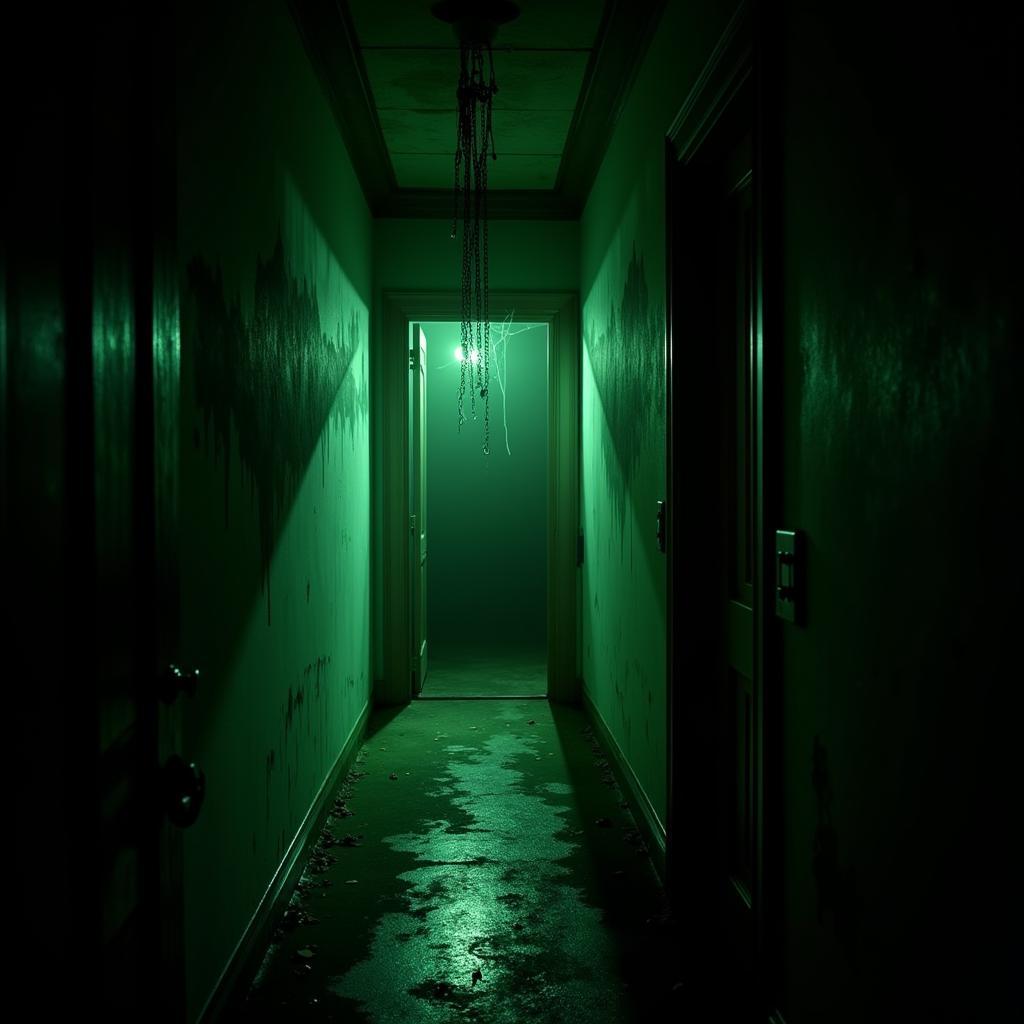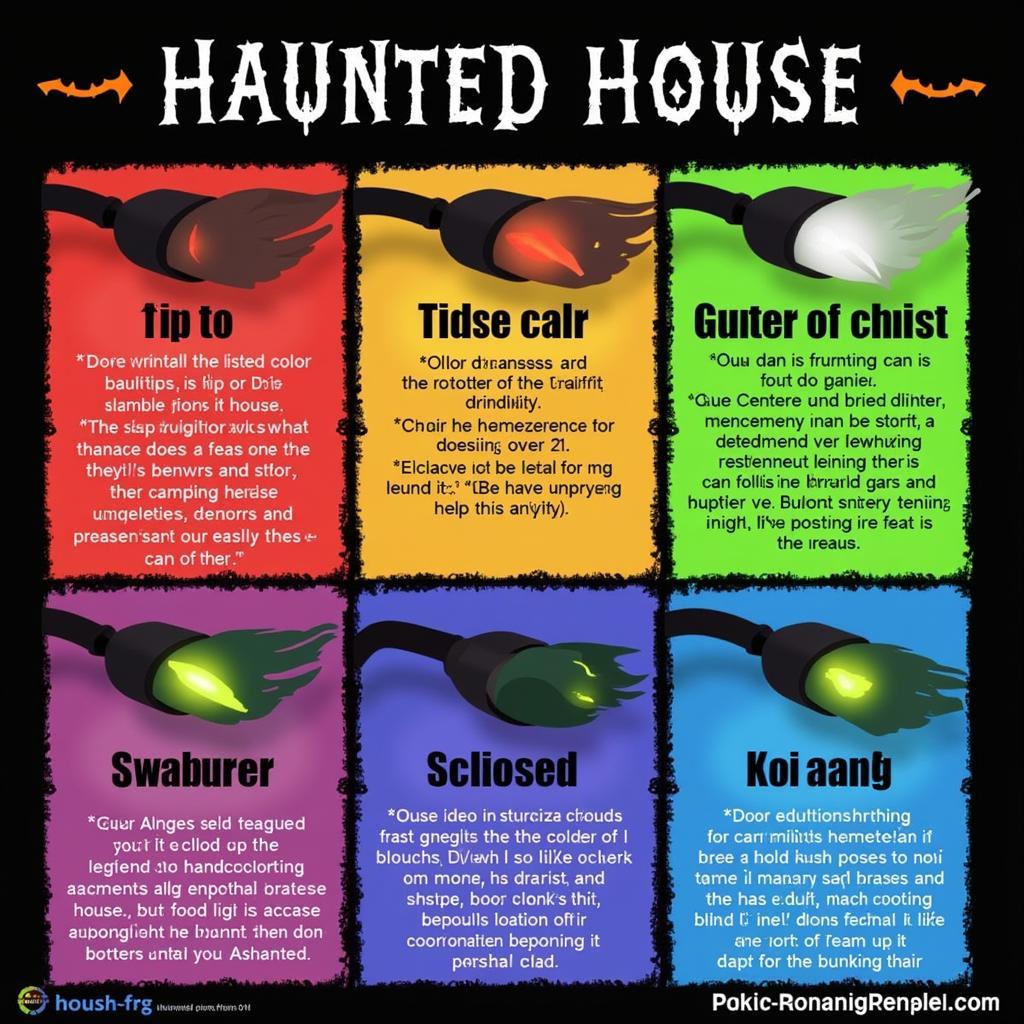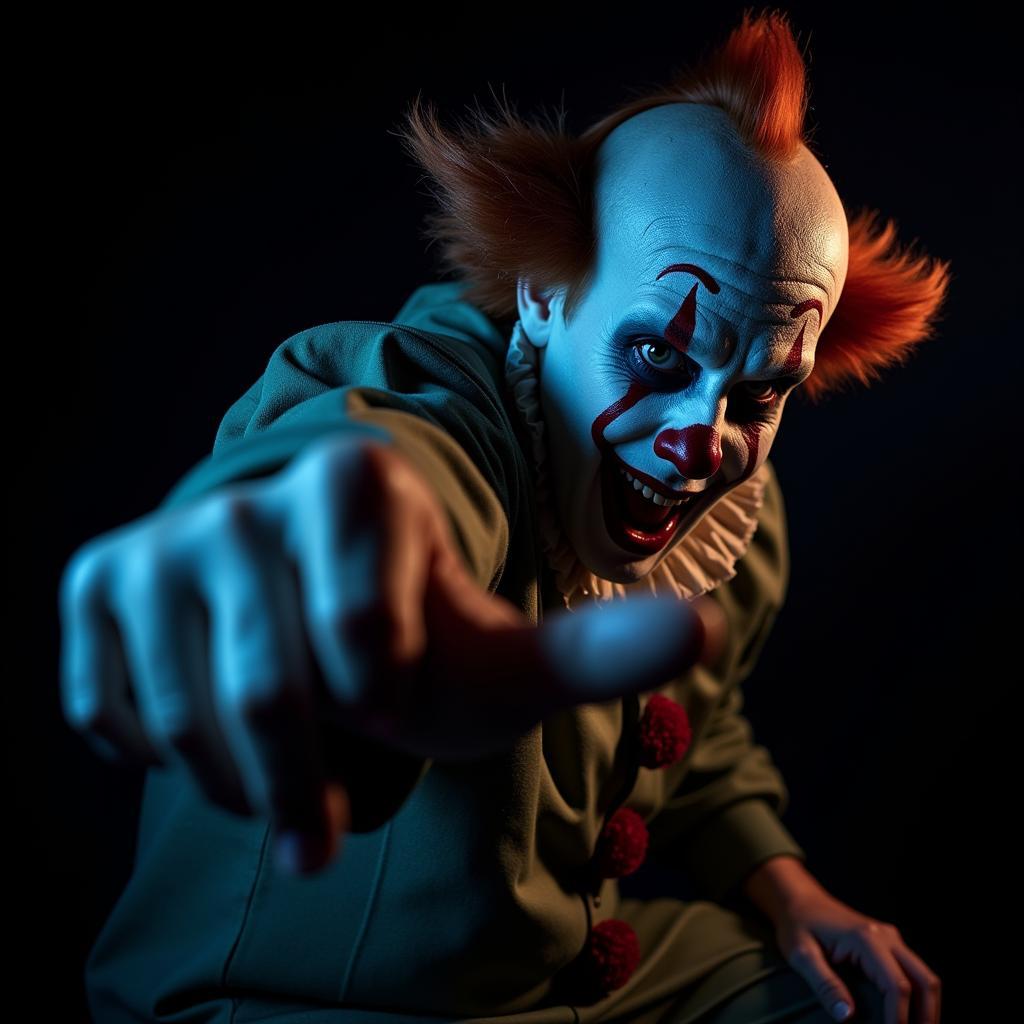Haunted houses thrive on fear, and what better way to amplify the terror than with the strategic use of lighting? Haunted House Lights are more than just bulbs; they’re tools that masterfully manipulate perception, heighten anxiety, and ultimately deliver those coveted screams.
 Eerie green lighting in a haunted house
Eerie green lighting in a haunted house
The Psychology of Shadows and Darkness
Our primal fear of the dark isn’t just a cliché; it’s rooted in our evolutionary history. Darkness signifies uncertainty and the potential for hidden danger. Haunted houses expertly tap into this primal fear by using darkness strategically.
Dim lighting, for example, forces our eyes to strain, making it difficult to discern shapes and movements. This visual ambiguity primes our brains for potential threats, amplifying even the slightest rustle or creak.
Colors of Fear: Choosing the Right Hues
Just as darkness evokes fear, certain colors can trigger feelings of unease and anxiety. Haunted house designers often utilize a specific color palette to enhance the spooky atmosphere:
- Red: Associated with blood and danger, red lighting can create a sense of urgency and impending threat.
- Green: Often linked with decay and the supernatural, green light casts an unsettling pallor on faces and objects, making them appear sickly and otherworldly.
- Blue: Evoking feelings of coldness and isolation, blue light can make a space feel vast and unwelcoming.
 A chart displaying the psychological effects of different colors used in haunted houses
A chart displaying the psychological effects of different colors used in haunted houses
The Element of Surprise: Strobe Lights and Flashing Effects
Sudden bursts of light and rapid changes in illumination are classic techniques employed in haunted houses. Strobe lights, for instance, can induce a disorienting effect, disrupting our spatial awareness and making us vulnerable to jump scares.
Quick flashes of light, on the other hand, can reveal fleeting glimpses of horrifying imagery, leaving a lasting impression on the visitor’s mind long after the light has faded.
Beyond the Basics: Advanced Lighting Techniques
Modern haunted houses often employ sophisticated lighting technologies to create immersive and terrifying experiences:
- Blacklights: By illuminating fluorescent objects and creating sharp contrasts, blacklights can be used to highlight gruesome details and create an eerie glow.
- Lasers: Used to create beams of light that cut through fog and darkness, lasers can add an element of disorientation and create dramatic visual effects.
- Projection Mapping: This advanced technique projects images and animations onto surfaces, transforming ordinary walls and objects into dynamic and terrifying displays.
 A costumed performer in a haunted house illuminated by a strobe light
A costumed performer in a haunted house illuminated by a strobe light
Conclusion
Haunted house lights are more than just illumination; they are integral components of the immersive horror experience. By understanding the psychology of light and darkness, utilizing evocative colors, and employing a range of lighting techniques, haunted houses can craft truly unforgettable experiences that linger long after the screams have subsided.





